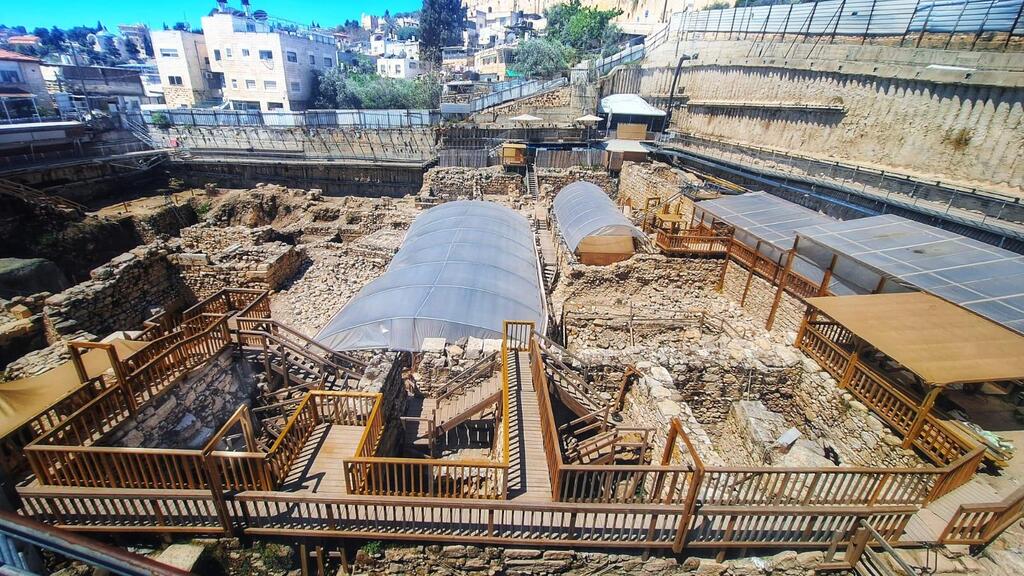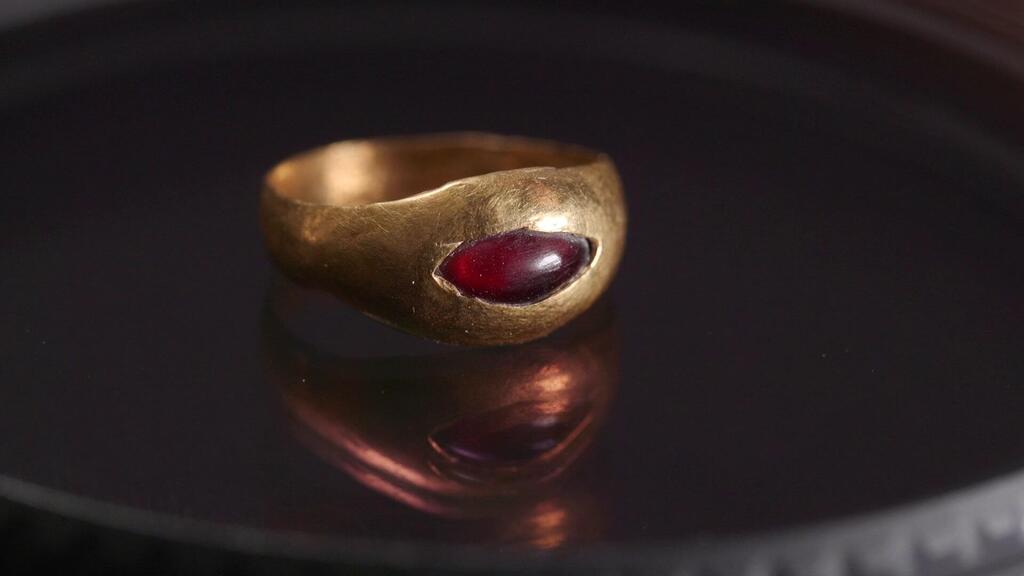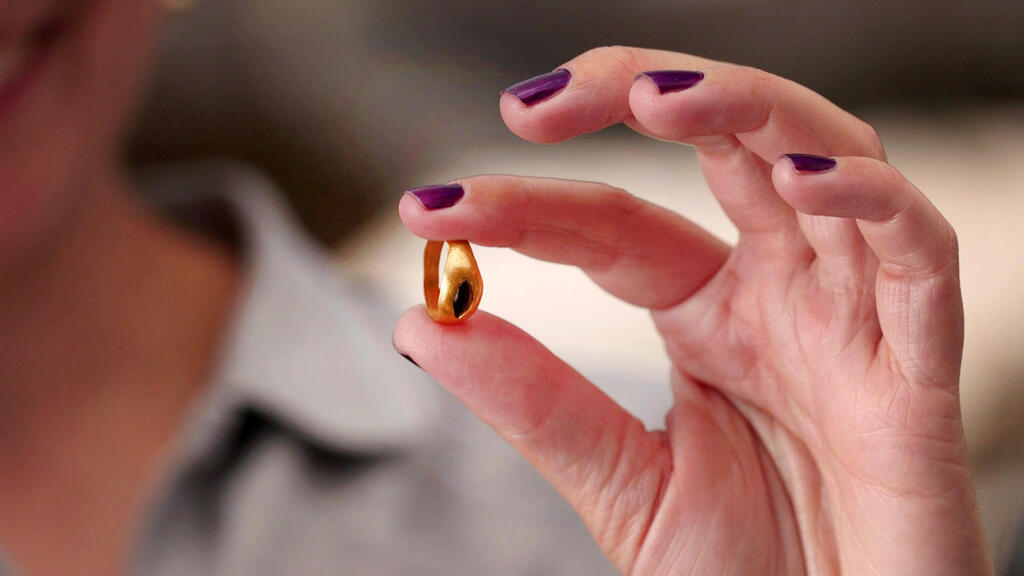A gold ring set with a gemstone from the early Hellenistic period was discovered in an archaeological excavation in the City of David located in the Jerusalem Walls National Park. The ring is made of gold and set with a red gemstone, likely to be garnet. Due to gold being a noble metal, the ring has been preserved in excellent condition over the 2,300 years since it was used, with no rust or other time-related damages.
The excavation is conducted by the Israel Antiquities Authority (IAA) and Tel Aviv University, funded by the Elad Foundation. The find will be presented next week at the "Jerusalem Mysteries" conference, held by the Israel Antiquities Authority in honor of Israel’s Jerusalem Day.
The ring was discovered by Tehiya Gangate, one of the excavators in the City of David while sifting through archaeological debris from the dig. "I was sifting earth through the screen and suddenly saw something glitter," she recalled.
“I immediately yelled, ‘I found a ring, I found a ring!’ Within seconds everyone gathered around me, and there was great excitement. This is an emotionally moving find, not the kind you find every day. In truth, I always wanted to find gold jewelry, and I am very happy this dream came true - literally a week before I went on maternity leave.”
Due to the ring’s small diameter, researchers estimate that it belonged to a child who lived in Jerusalem during the Hellenistic period. The researchers called it "an exciting find that you don’t come across every day."
3 View gallery


Givati Parking Lot excavation site in the City of David
(Photo: Maor Ganot, City of David National Park)
Dr. Yiftah Shalev and Riki Zalut Har-tov, IAA excavation directors, added, " The ring is very small. It would fit a woman’s pinky, or a young girl or boy’s finger. Dr. Marion Zindel says the ring was manufactured by hammering thin pre-cut gold leaves onto a metal ring base. Stylistically it reflects the common fashion of the Persian and Early Hellenistic periods, dating from the late 4th to early 3rd century BCE and onwards. In that period people began to prefer gold with set stones rather than decorated gold.”
Prof. Yuval Gadot from Tel Aviv University and Efrat Bocher, who took part in the excavation, commented on the exciting discovery. "The recently found gold ring joins other ornaments of the early Hellenistic period found in the City of David excavations, including the horned animal earring and the decorated gold bead,” they said.
"The Givati Parking Lot excavation finds are beginning to paint a new picture of the nature and stature of Jerusalem’s inhabitants in the Early Hellenistic Period. Whereas in the past we found only a few structures and finds from this era, and thus most scholars assumed Jerusalem was then a small town, limited to the top of the southeastern slope (“City of David”) and with relatively very few resources, these new finds tell a different story: The aggregate of revealed structures now constitute an entire neighborhood.
“They attest to both domestic and public buildings, and that the city extended from the hilltop westward. The character of the buildings – and now, of course, the gold finds and other discoveries, display the city’s healthy economy and even its elite status. It certainly seems that the city’s residents were open to the widespread Hellenistic style and influences prevalent also in the eastern Mediterranean Basin.”
Gold jewelry is well known and documented throughout the Hellenistic world, starting from the rise of Alexander the Great. His conquests contributed to the distribution and transport of valuable materials and products. The jewelry was often adorned with mythological figures or animals of symbolic significance.
Israel Antiquities Authority Director Eli Escusido, said, "The excavation in ancient Jerusalem reveals invaluable information to us about our past. In honor of Jerusalem Day, we are happy to invite the public to attend.”




